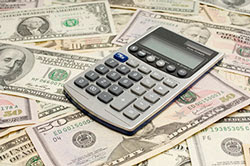Commuters in the suburban radio markets surrounding New York and Washington, DC, spend the most time getting to their jobs each workday, according to a newly released Arbitron analysis of commuting data from the 2007-2011 U.S. Census Bureau’s American Community Survey, using Fall 2012 Arbitron Metro definitions.
Commuters in Sussex, NJ, suffer the most compared to their workday compatriots in the rest of the Arbitron radio Metros. Sussex commuters spend an average of slightly more than 37 minutes getting to work; Fredericksburg, VA, is number two, also at slightly more than 37 minutes.
Arbitron compiled average commuting times for employed residents of its 275 radio Metros using the U.S. Census Bureau’s American Community Survey from 2007-2011, providing radio stations with average commuting data for their specific radio market.
Since 84% of all drivers or passengers report use of AM/FM radio in-car, Arbitron also analyzed which formats were top in morning drive and how much time is spent listening to the radio during morning drive (Monday-Friday 6AM-10AM) in an average week.
Top 5 Markets by Commute Time: Average Travel Time to Work
| Average Daily Travel Time to Work minutes.seconds |
Metro Name |
Format of Top Station (P 18+ AQH Share; M-F 6AM-10AM) |
Weekly Time Spent Listening for Total Market (P18+; M-F 6AM-10AM) |
| 37.7 |
Sussex, NJ |
Adult Contemporary |
5:00 |
| 37.6 |
Fredericksburg |
Country |
4:45 |
| 34.7 |
New York |
All News |
3:15 |
| 34.1 |
Frederick |
Country |
4:30 |
| 33.6 |
Washington, DC |
News/Talk |
2:45 |
* AQH and TSL data based on most recently released survey period
Public Transportation a Factor for Time Spent Listening in Morning Drive
While the New York and Washington, DC, Metro are among the top five Metros for commute time, their morning drive Time Spent Listening is not on par with the other three leading commute time markets.
One possible reason— these two markets are also the leading markets for public transportation. In New York, 31.6% take public transportation to work; in Washington, DC—14.7%.
Without a dashboard radio to accompany their commute, many bus and subway commuters aren’t available to contribute to the morning drive Time Spent Listening.
Bottom 5 Markets by Commute Time: Average Travel Time to Work
Away from Eastern seaboard highways and West Coast freeways, commuters in middle America have an easier time of their journey to work. Grand Forks, ND-MN, with an average commute time of just over 14 minutes, has the lowest commute time to work of all 275 metro markets.
| Average Daily Travel Time to Work minutes.seconds |
Metro Name | Format of Top Station (P 18+ AQH Share; M-F 6AM-10AM) |
Weekly Time Spent Listening for Total Market (P18+; M-F 6AM-10AM) |
| 14.5 | Grand Forks, ND-MN | Album Oriented Rock | 5:15 |
| 14.7 | Grand Island-Kearney, NE | Country | 5:30 |
| 15.5 | Cheyenne, WY | Classic Hits | 4:45 |
| 16.1 | Wichita Falls, TX | Country | 4:30 |
| 16.2 | Mankato-New Ulm-St. Peter, MN | Country | 5:15 |
* AQH and TSL data based on most recently released survey period
To view a full list of all 275 markets, visit the following URL:
http://www.arbitron.com/study/commute_times.htm
RBR-TVBR observation: Another reason for low TSL in DC/Fredericksburg is simply that everyone knows that the usual commuting highways of I-95, I-66 and the DC Beltway will simply be backed up for tens of miles everyday. There is no reason to hear the same repetition daily of where the backups begin. If there is an accident, there are virtually no alternative roads to take. The DC area—especially Northern Virginia—are tragically devoid of enough expressways or lanes to carry the tremendous traffic load in the few that do exist. At least for now on the Beltway, commuters can pay to jump on express lanes. That’s also being constructed now on I-95 south of the Beltway.




